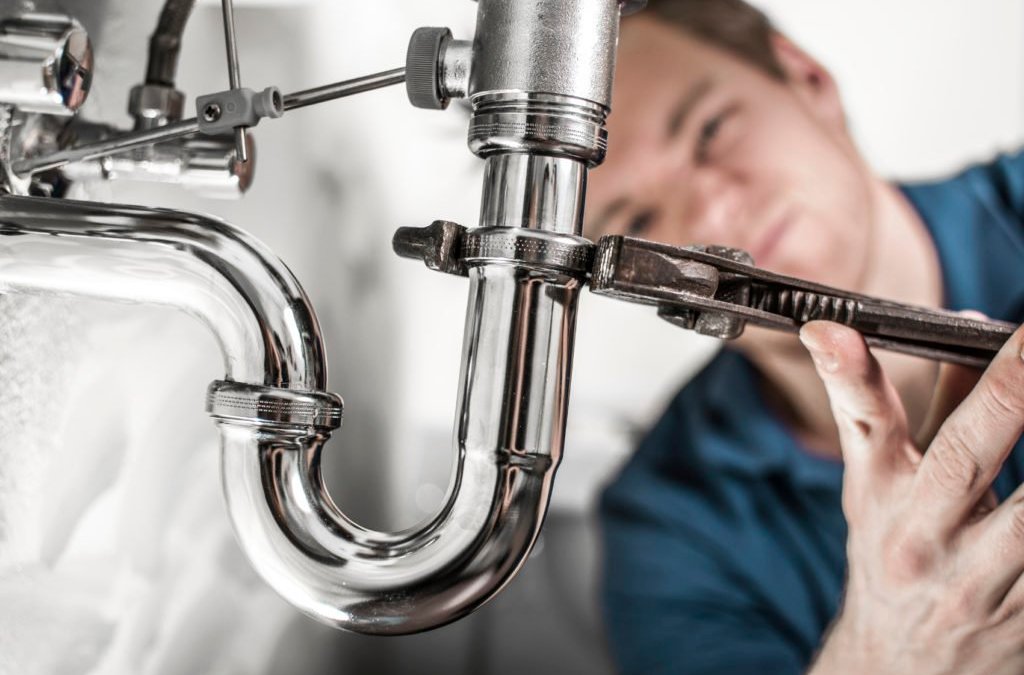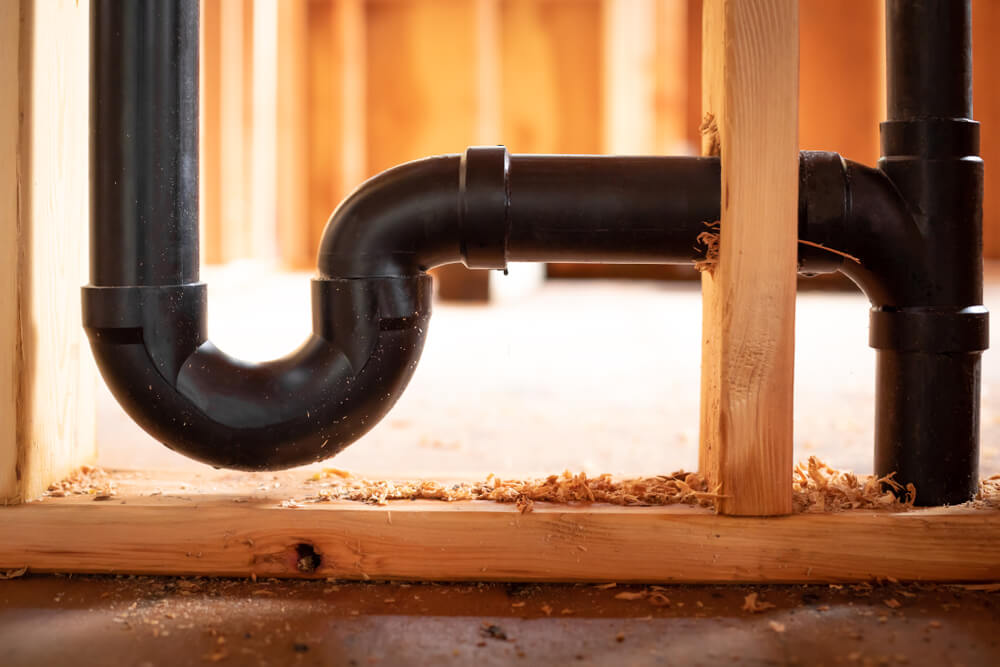What're your opinions about Plumbing basics: How your home plumbing works?

Plumbing is an essential aspect of any home, responsible for providing tidy water for alcohol consumption, food preparation, and showering, in addition to getting rid of wastewater securely. Recognizing the essentials of home plumbing is essential for every single property owner to ensure proper maintenance, troubleshooting, and, if essential, fixings. In this newbie's overview, we'll cover the basic principles of home plumbing to help you end up being extra knowledgeable about exactly how it functions.
Supply Of Water System
The water system brings clean water right into your home from a municipal water source or an exclusive well. It contains a primary water line that attaches to your home's plumbing system, typically located underground. A water meter gauges the amount of water consumed, while a shut-off shutoff enables you to regulate the flow of water right into your home.
Plumbing Fixtures
Plumbing fixtures are tools that deliver water to different parts of your home and consist of sinks, faucets, commodes, showers, tubs, and devices such as dishwashing machines and washing devices. Each component is linked to the water supply system via pipelines and fittings and might have its shut-off valve for maintenance or emergency situations.
Water Furnace
The water furnace is in charge of home heating water for residential usage, consisting of bathing, cooking, and cleaning. Usual types of water heaters include tank-type water heaters, tankless (on-demand) hot water heater, and heatpump hot water heater. The hot water heater is linked to the supply of water system and delivers hot water to plumbing fixtures as required.
Drainage System
The drain system gets rid of wastewater from your home and lugs it away to a sewer treatment center or septic system. It consists of a network of pipes, installations, and fixtures that move wastewater from plumbing components to the main sewage system line or sewage-disposal tank. Proper drainage is essential to stop obstructions, backups, and sewage leaks.
Air flow System
The ventilation system assists preserve proper atmospheric pressure and stop drain gases from entering your home. Vent pipes, also known as air vent stacks, prolong from plumbing fixtures to the roofing system, allowing sewer gases to run away safely outdoors. Ventilation pipes additionally permit air to get in the drainage system, promoting smooth wastewater flow and preventing suction or vacuum results.
Common Plumbing Tools
Having the right tools accessible is crucial for doing fundamental plumbing fixings and maintenance tasks. Typical plumbing devices consist of adjustable wrenches, pipe wrenches, pliers, pipeline cutters, hacksaws, bettors, augers (or drain serpents), and Teflon tape. Having these devices readily available can help you deal with small plumbing problems successfully.
Basic Plumbing Fixings
While some plumbing repair work might need professional aid, many usual concerns can be attended to with basic do it yourself strategies. Knowing how to take care of a dripping faucet, unblock a drainpipe, replace a toilet flapper, or fix a leaking showerhead can save you money and time on plumbing repair work.
Conclusion
Recognizing the essentials of home plumbing is essential for every single house owner to maintain a risk-free, practical, and reliable plumbing system. By familiarizing on your own with the supply of water system, plumbing components, drainage system, air flow system, common plumbing devices, and standard repair services, you can with confidence deal with small plumbing issues and guarantee your home's plumbing system runs smoothly.
Plumbing for Beginners: A Comprehensive Guide
If you’re a beginner when it comes to plumbing, don’t worry; you’re not alone. Plumbing may seem intimidating, but with the right knowledge and a little practice, you can handle many common plumbing issues on your own. In this comprehensive guide, we will demystify the world of plumbing for beginners, providing you with the basic knowledge and skills needed to tackle common plumbing problems and even take on some DIY plumbing projects.
The Importance of Basic Plumbing Knowledge for Beginners:
First and foremost, basic plumbing knowledge gives you a solid foundation. It helps you grasp the key concepts and terminology that are essential in this field. By learning the basics, you’ll be able to build upon that knowledge and tackle more complex plumbing tasks in the future.
Having a basic understanding of plumbing also enables you to handle common issues that may arise in your home. Picture this: a leaky faucet or a clogged drain. With some basic plumbing knowledge, you’ll have the confidence to troubleshoot and fix these problems on your own. It saves you from unnecessary expenses and the hassle of waiting for a professional to arrive.
As a beginner, learning the basics of plumbing empowers you to take care of your own home. It gives you a sense of independence and self-reliance. You’ll no longer have to rely solely on professionals for every small issue that pops up. Instead, you can handle many tasks yourself, saving time and money in the process.
Remember, everyone starts as a beginner. Embrace the learning process and take small steps to expand your plumbing knowledge. There are plenty of online resources, tutorials, and even local workshops that talk about plumbing for beginners.
Essential Tools for Plumbing for Beginners
As you start your plumbing journey, having the right tools in your toolbox is crucial. Let’s explore some of the must-have tools:
Adjustable Wrench:
This versatile tool is a staple in any plumber’s toolbox. It allows you to tighten or loosen nuts and bolts of various sizes. Make sure to have an adjustable wrench with a comfortable grip.
Pipe Wrench:
A pipe wrench is specifically designed for gripping and turning pipes. It has serrated jaws that provide a strong grip, making it easier to loosen or tighten threaded pipes and fittings.
Plunger:
The plunger is a simple yet effective tool for clearing clogged drains and toilets. It creates suction when you push and pull, helping to dislodge blockages. Keep a good-quality plunger handy for those unexpected clogs.
Pipe Cutter:
When it comes to cutting pipes, a pipe cutter is your go-to tool. It creates clean, precise cuts without damaging the pipe. Look for a pipe cutter that can handle the pipe sizes you’re working with.
Hacksaw:
A hacksaw is useful for cutting through pipes, screws, and other materials. It’s a versatile tool that can handle different cutting tasks. Remember to use a blade suitable for cutting metal.
Tape Measure:
Accurate measurements are crucial in plumbing. A tape measure allows you to measure pipe lengths, distances, and dimensions accurately. Opt for a sturdy tape measure that extends a good length.
Pliers:
Pliers come in handy for various tasks, such as gripping, bending, and cutting. Slip-joint pliers with adjustable jaws are great for gripping pipes, nuts, and bolts.

We had been introduced to that editorial on through someone on a different web page. Remember to take a moment to distribute this content if you liked it. Thanks so much for your time invested reading it.
Book Instantly